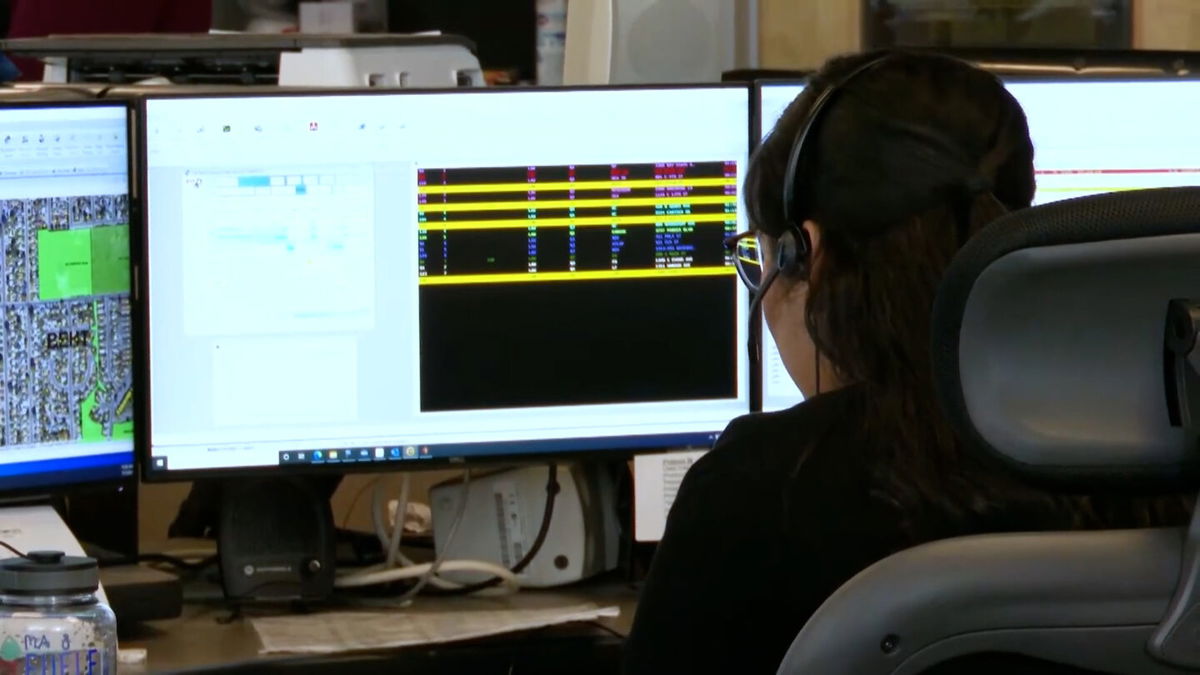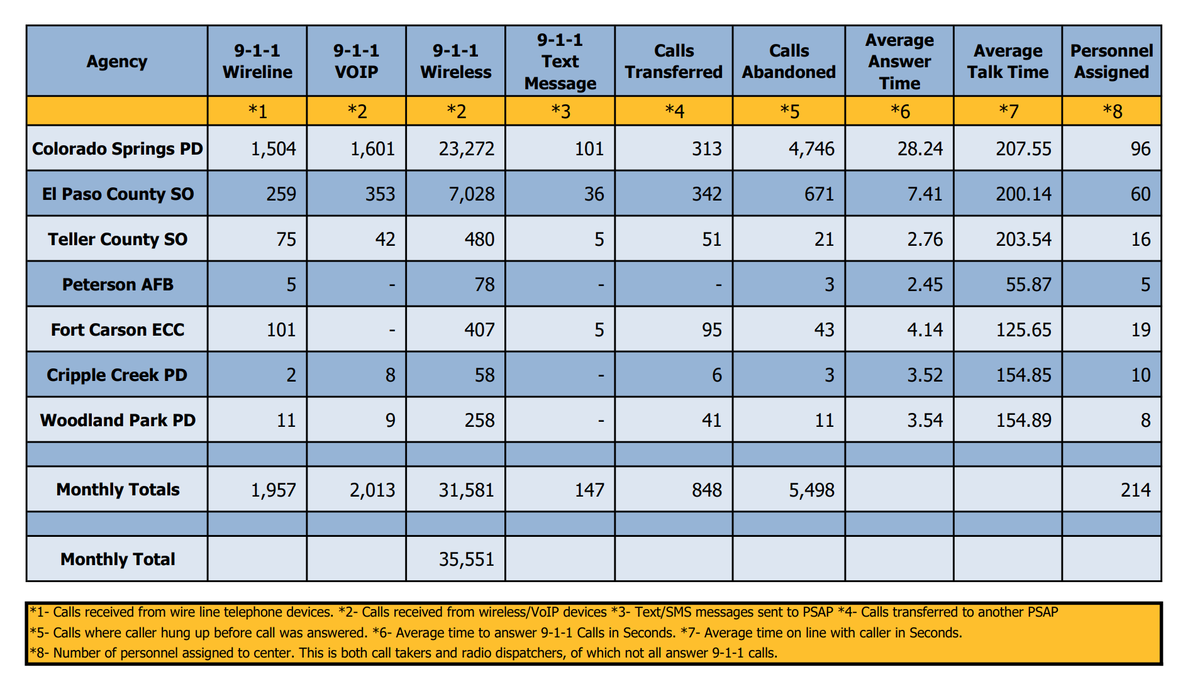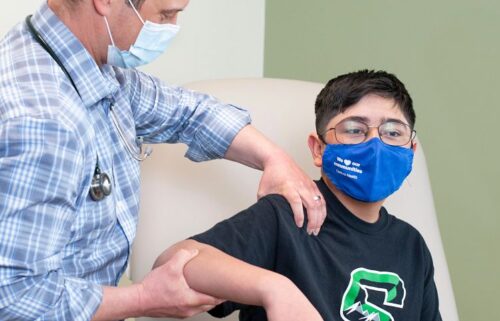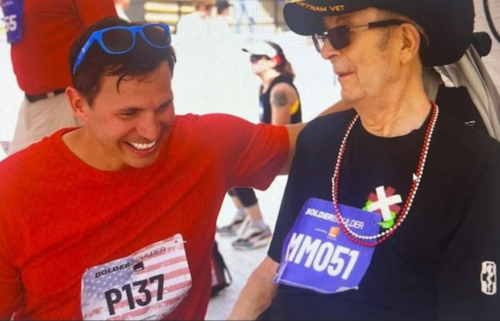Colorado Springs Police Department’s 911 answering times below national standards

COLORADO SPRINGS, Colo. (KRDO) -- If you were to call 911 and be routed to the Colorado Springs Police Public Safety Communications Center, data shows it will likely take about 23 seconds for your call to be answered.
The El Paso-Teller County 911 Authority keeps track of 911 data for all seven agencies within its jurisdiction, from Colorado Springs Police Department to the Woodland Park Police Department. These statistics track the monthly averages of calls made, answering time, talking time and the number of personnel in the call center.
According to the most recent data from July, the Colorado Springs Public Safety Communications Center, which takes calls and dispatches officers for the Colorado Springs Police Department, answers 911 calls in about 28 seconds. This is at least four times longer than of the other six law enforcement agencies in the area.

“It's above the standard, but I've seen far worse,” said April Heinze, the 911 and PSAP Operations Director for the National Emergency Number Association. “As much as I hate to admit that when it comes to staffing shortages, you've got some centers in the United States that are actually having to shut down various different functions that they perform because they simply just have to focus on answering 911 calls.”
CSPD’s answering time is longer than the national standards set by the National Emergency Number Association. They say 90% of 911 calls should be answered within 15 seconds and 95% of calls within 20 seconds.
“Most often you will find those that are not able to meet the standard are having some sort of staffing shortages, and that seems to be a crisis,” Heinze said.
The Colorado Springs Police Department said it didn’t have anyone to interview about the answering times. However, they said through email July is usually one of their busiest call months. In the last year, their average monthly answering time has ranged from 18 to 28 seconds.
The agency also said it is taking about three times the calls as all the other six agencies combined and without three times the staff. Through the end of August, the department said it has taken nearly 192,000 calls, while the El Paso County Sheriff's Office has taken about 55,000.
Nicole Brotz, who was a former deputy for the Clear Creek County Sheriff’s Office, said she understands how staffing shortages affect law enforcement operations, especially within communication centers.
“You just don't have the manpower to answer these phone calls, let alone have deputies and police officers to respond to the calls,” she said.
CSPD said there are 22 openings within the communications center and half of those are for call takers.
“People are having a harder and harder time getting people into seats and into positions to make sure that they can do the position they're hired to do,” said Ben Bills, the public information officer for the El Paso-Teller County 911 Authority.
The 911 Authority said call volumes have only increased with the evolution of technology, making it more difficult for communication centers to keep emergency lines open.
“With technology on the go and in our pockets all the time, let's say there's an accident on the interstate, you're going to get ten, 15 or 20 calls that they all have to process and get those out of the way to make sure that they have those lines open to help the next person,” Bills said.
Bills said the public can help by only calling 911 for emergencies.
“Let's say someone went through your car in the middle of the night, but they're no longer around, those types of things could be handled on a non-emergency line or through some online reporting and may not have to be handled by 911 and tie up an emergency line,” Bills said.
But the non-emergency line for the Colorado Springs Police Department has even longer answering times than 911. According to CSPD, the monthly average answering time for the non-emergency line this year ranges from 2:14 to 4:25.
Heinze, the 911 operator director with NENA, said improving answering times requires increased staffing. She said this can be done with better recruiting and raising wages.
“It is important that we look at wages and benefits for 911 professionals to be on par with other public safety entities,” she said.
Right now, those that work in communication centers are not considered public safety, but rather clerical and administrative. This means they receive less benefits and salary. NENA is trying to pass federal legislation that will help classify communication center workers as part of public safety, which will help increase benefits and wages and improve staffing.
“You are helping people in their worst moments through some of the most horrendous things they will ever experience,” Heinze said. “At the end of the day, you have gone home and helped countless people throughout your day.”




